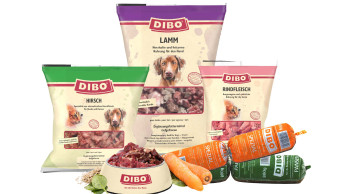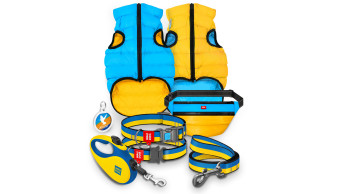

Dogs and cats experience many health problems which are due in large part to incorrect dietary management, warns Prof. Alessandro Gramenzi in this article
Among these problems three groups of pathologies are of major concern: food-related orthopaedic ailments, obesity, intolerance or allergy to foods and several gastrointestinal disorders. I will try to summarise briefly and simply the main aspects of each problem and the support that pet food can provide.Bones and muscles require an adequate nutritional supply for the normal development, function and integrity of the locomotor system. The wrong food interferes with these aspects and although it is rare to observe orthopaedic diseases caused exclusively by food, many common clinical problems of this type are affected by dietary factors. Food influences the occurrence, severity and outcome of orthopaedic diseases and will affect the process of inheritance and environmental factors. Diseases of the musculoskeletal system can be divided into congenital, developmental, degenerative and traumatic. The developmental ones are normally observed during the most rapid period of growth. The precise period varies with breed and is influenced by both inheritance and food. Degenerative diseases are frequently seen in old dogs or cats, while congenital orthopaedic problems may be obvious at birth or during the neonatal period. There is a difference between dogs and cats where food-related disorders are concerned: cats are not as prone to developmental orthopaedic diseases as dogs because they grow more slowly. Among dogs these pathologies are almost exclusively manifested in large or giant breeds. They depend partly on adult size, but hereditary predispositions seem to operate as well. Moreover, the prevalence and severity of this type of disease is higher in males. Prevention of food-related orthopaedic diseases is more rewarding than treatment. Some groups of these pathologies are caused by incorrect diet and are therefore totally prevented by feeding a complete and balanced diet in optimal amounts. For others, diet can be used at best to partly influence their clinical course.Obesity is another very common disorder that occurs in companion animals. Owners hardly ever present their animals for the treatment of obesity, although results show that 27 per cent of dogs are judged to be overweight or obese. The incidence of obesity has increased in cats too; recent studies reported that between 25 per cent and 40 per cent of cats are overweight or obese. The causes of obesity are a sedentary lifestyle and the provision of highly palatable and energy- dense foods. The main…
Related articles
Read also

 Menü
Menü






 11-12/2006
11-12/2006












 Newsletter
Newsletter